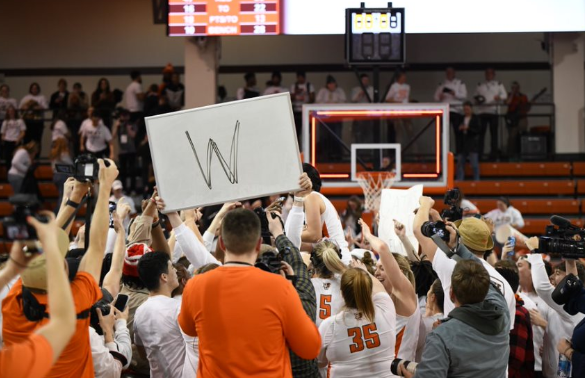The smudged ink on the reader’s fingers, the rings of coffee stains on the paper, the tactile feeling of flipping through pages of daunting black print ‘- For many people, reading a newspaper is a religious experience. However, the days of waking up to a cup of coffee and a copy of The New York Times (or The Daily Evergreen) are numbered. For better or worse, a fundamental change in the dissemination of news is occurring, and the newspaper industry must adapt or be swallowed by its antiquated methods. Due to the dramatic economic decline, advertising revenue is slowing to a trickle and newspapers have been forced to do more than eliminate distribution costs. A shift away from the current business model, which does not charge readers for the content they read online, must be undertaken to save America’s crippled newspaper industry. There is little sense in defending the medium of newsprint, but my critiques of the physical medium should not be confused with the newspaper’s content. The printed word transcends time and space and is a cornerstone of a functional democracy. It is illogical to abandon print journalism simply because the conduit used to convey the message is no longer pertinent in society. The San Francisco Chronicle, The Rocky Mountain News and – to an extent – the Seattle Post-Intelligencer have already fallen victim to this faulty business model. Walter Isaacson, the former managing editor of Time magazine, is receiving considerable attention for his idea to incorporate micropayments (fees similar to the ones made on an iTunes account) to the online newspaper industry. According to Isaacson’s plan, readers would pay a small fee for every article they view, making the paper beholden to the reader rather than advertisers. The flaw in Isaacson’s plan is that newspaper articles are not songs. Articles and columns are not continually digested by the user. After the reader finishes an article, they are done, period. This is why the micropayment system must be based on subscriptions. If customers want to read Time or Newsweek, they would make a monthly payment for the online publication. Charging by the article is a deterrent to browsing, whereas a subscription-based plan allows the consumer to impulsively explore the publication. An additional problem plaguing Isaacson’s model is consumer demand. Many people will refuse to pay for something they already get for free, and those who are willing to pay might be more inclined to read trashy celebrity gossip than real news. The decline in online advertisement revenue proved content cannot be free. In the globalized world where the reader possesses more choices than ever before, content must be commoditized and become the defining factor of the news industry. Newspapers cannot afford to maintain foreign bureaus or send reporters into the midst of conflict zones if the consumer does not pay for the product. It does not take a Nobel prize-winning economist to see that newspaper’s current online business model is horribly flawed. I’m sure most people are pondering the question: If newspapers don’t exist, what will I read when I’m on the toilet? One of the most important qualities of a print product that needs to be preserved is the mobility factor. Some type of handheld media device ‘- perhaps similar to Amazon’s Kindle ‘- is needed to replace the print product in this dynamic news era. BlackBerrys and iPods will not suffice because their displays are far too inferior to properly preserve and present the front page of The Wall Street Journal. Much like Johannes Gutenberg’s printing press, this new medium will facilitate the dissemination of knowledge and give voice to the voiceless. Without the Fourth Estate’s capacity to convey information through some medium, the way people interact and interpret the world around them will be compromised. Unless substantive steps are taken to adopt a new means of thinking about the printed word, another local newspaper will fail and another American city will suffer the same fate as Seattle, San Francisco and Denver.


Follow us on social
- Children of Eden written by Joey GraceffaBy: Destiny Breniser This book was published in 2016 with its genre being Young Adult, Dystopian, and Apocalyptic. This story is about Rowan, who is a second-born child living in a city where her entire existence is illegal. She longs for the day when she can leave her family’s house and live without fear. She […]
- An Unwanted Guest written by Shari LapenaBy: Destiny Breniser A classic whodunnit that keeps you guessing till the very end. With twelve characters to read varying points of view from, there is always something happening to leave you wondering what is going on. This book was published in 2018 with its genre being a mystery thriller. The story starts with Reily […]

July 25, 2024

July 24, 2024

July 23, 2024
Print journalism hoping to survive with online industry
April 30, 2009
Leave a Comment
Donate to BG Falcon Media
$1410
$1500
Contributed
Our Goal
Your donation will support the student journalists of Bowling Green State University. Your contribution will allow us to purchase equipment and cover our annual website hosting costs.
More to Discover












